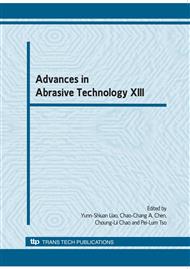p.929
p.935
p.940
p.946
p.952
p.957
p.965
p.970
p.976
Thermal Transport in the Copper Powders with Nanometer and Micrometer Particles
Abstract:
This paper investigates effects of particle size on heat transfer in copper powders. The understanding for thermal properties of the powder is advantageous to the advancement of the processing technologies such as laser cladding, laser sintering, powder metallurgy and its other applications. Nanosized particles possess characteristic physical and chemical properties different from those of bulk materials due to the confinement of electrons, excitons, and photons into small volumes. Therefore it is valuable to discuss the thermal behaviours of powders constituted by nanometer-sized particles. The powder is wrapped up in the slender tube. One end of the slender tube filled with powder is connected to the low constant-temperature reservoir and the other end is kept at room temperature. The temperature histories at the 1cm location of the slender tube from the low constant-temperature reservoir are recorded using thermal couples. Powders of particles with the sizes 50nm and 5000nm are employed in this experiment. The results show that the thermal diffusion in the 50nm Cu powder is faster than that in the 5000nm Cu powder.
Info:
Periodical:
Pages:
952-956
Citation:
Online since:
August 2010
Authors:
Keywords:
Price:
Сopyright:
© 2010 Trans Tech Publications Ltd. All Rights Reserved
Share:
Citation:


